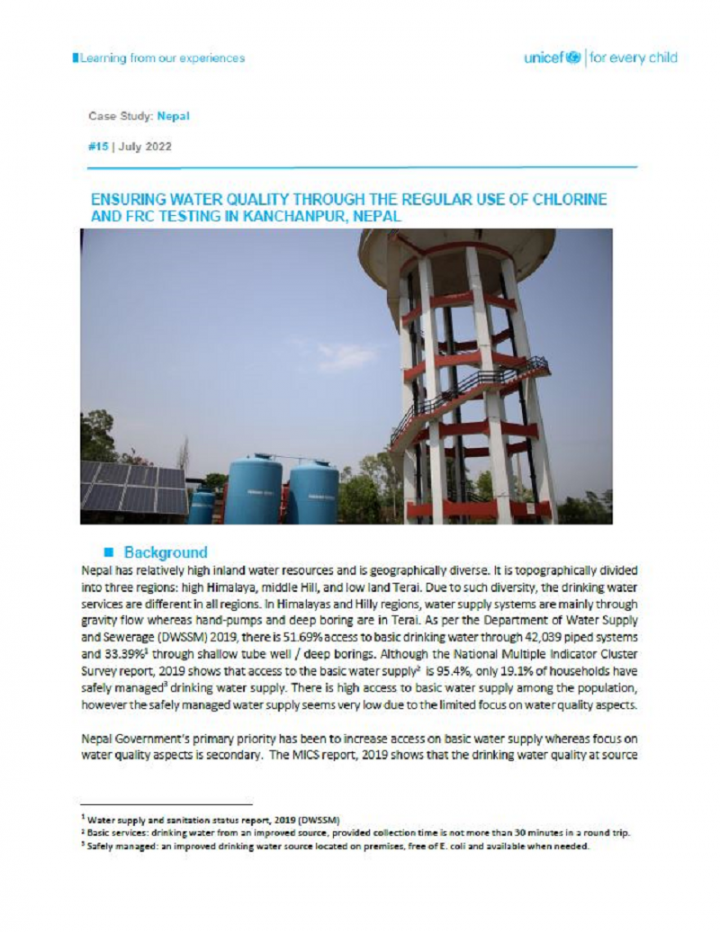ENSURING WATER QUALITY THROUGH THE REGULAR USE OF CHLORINE AND FRC TESTING IN KANCHANPUR, NEPAL
Chaudhary, P. (2022)

Published in: 2022
Pages: 4
Publisher:
UNICEF
Author:
Chaudhary, P.
Uploaded by:
SuSanA Admin
656 Views
100 Downloads
Nepal has relatively high inland water resources and is geographically diverse. It is topographically divided into three regions: high Himalaya, middle Hill, and low land Terai. Due to such diversity, the drinking water services are different in all regions. In Himalayas and Hilly regions, water supply systems are mainly through gravity flow whereas hand-pumps and deep boring are in Terai. As per the Department of Water Supply and Sewerage (DWSSM) 2019, there is 51.69% access to basic drinking water through 42,039 piped systems and 33.39%1 through shallow tube well / deep borings. Although the National Multiple Indicator Cluster Survey report, 2019 shows that access to the basic water supply2 is 95.4%, only 19.1% of households have safely managed3 drinking water supply. There is high access to basic water supply among the population, however the safely managed water supply seems very low due to the limited focus on water quality aspects.
Bibliographic information
Chaudhary, P. (2022). ENSURING WATER QUALITY THROUGH THE REGULAR USE OF CHLORINE AND FRC TESTING IN KANCHANPUR, NEPAL. UNICEF
Filter tags
English South Asia














